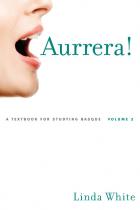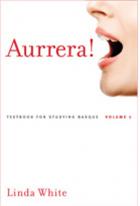
 Way back in 1991, in between my sophomore and junior years at the University of Idaho, I took a year off to study both Basque and Spanish in the Basque Country through the program offered by the University Studies Abroad Consortium — USAC. I was more interested in Basque, but both my dad and my grandfather stressed the pragmatic wisdom of also learning Spanish. Back then, there weren’t many resources for an English speaker to learn Basque, especially one who knew next to nothing. USAC offered a course that was targeting students exactly like me. However, even so, things didn’t go as smoothly as I would have liked. Despite a semester of intensive Basque language course, I didn’t learn enough to be fluent. I chalk this up to two factors: Spanish was always easier, even for someone not studying Spanish directly (though I did have Spanish in high school) and my dad’s family speaks Bizkaino while I learned Batua. A seeming minor difference, but to someone just learning the language, that difference was night and day.
Way back in 1991, in between my sophomore and junior years at the University of Idaho, I took a year off to study both Basque and Spanish in the Basque Country through the program offered by the University Studies Abroad Consortium — USAC. I was more interested in Basque, but both my dad and my grandfather stressed the pragmatic wisdom of also learning Spanish. Back then, there weren’t many resources for an English speaker to learn Basque, especially one who knew next to nothing. USAC offered a course that was targeting students exactly like me. However, even so, things didn’t go as smoothly as I would have liked. Despite a semester of intensive Basque language course, I didn’t learn enough to be fluent. I chalk this up to two factors: Spanish was always easier, even for someone not studying Spanish directly (though I did have Spanish in high school) and my dad’s family speaks Bizkaino while I learned Batua. A seeming minor difference, but to someone just learning the language, that difference was night and day.
In any case, since that time, many more resources have become available to the English speaker wanting to learn Basque. One of the more recent ones is Aurrera!, a two volume textbook for studying Basque by Linda White. Now, while I have a number of Basque language resources, I still haven’t made the time to go through them in any serious manner, so I can’t really comment on how one book compares to another. That said, Aurrera! seems to be a very nice resource for the Euskara novice. Arranged by themes, such as Locations, Wants and Needs, and, most important for anyone visiting the Parte Vieja, Living it Up, Aurrera! quickly gets into real world language needs rather than focusing on more arcane grammar. Further, each chapter is accompanied by dialogs and activities that bring the language to life and pull the student into the language. Later chapters focus on all of the different tenses of the Basque verbs, so there are a number of such chapters, including “In the E-Mail that I Received,” that covers these concepts.
One thing that is missing for me are the tables that summarize declensions, conjugation, and the form of the auxiliary verbs. I’m not sure why, maybe it is my more mathematical bent, but encountering those tables as a student just learning Euskara, while certainly daunting in the complexity and density they represent, also gave order to the language for me. They summarized the language in a way I could get my head around. If Dr. White follows up with a second edition, I might suggest an appendix that collects such tables. Further, a brief chapter on the history of the Basque language, the current state, and the dialects would also be appreciated.
That said, for someone trying to learn the language, this seems an invaluable aid. I certainly have all intentions of going systematically through both volumes. Now, I just have to find the time!
More information about these books, as well as accompanying audio, can be found here.
Discover more from Buber's Basque Page
Subscribe to get the latest posts sent to your email.


Hi, Blas! Thank you so much for the lovely blog about my textbooks. I will keep your suggestions in mind, in case there is ever a second addition. I must confess, though, that your invaluable website offers so much in the way of cultural information and history, I almost feel those topics would be redundant in a textbook! The internet allows for instant updating, as opposed to paper books that are completely static after publication. 🙂
(And secretly, I also found the charts of conjugations and declensions oddly comforting during my studies. Alas, between book design, numbers of pages already included, etc., including them in my textbook did not happen. So sorry!)
Dr. Linda White
Basque is blessed with excellent learning resources, notably Linda’s wonderful books and the King Practical Introduction. Does anyone know of a volume of edited texts, or a bilingual book (Erderaz-Euskeraz on facing pages)?
Could I download free AURRERA vol.2 ?
I’m not aware of any place to download this. I only know of it as a book.